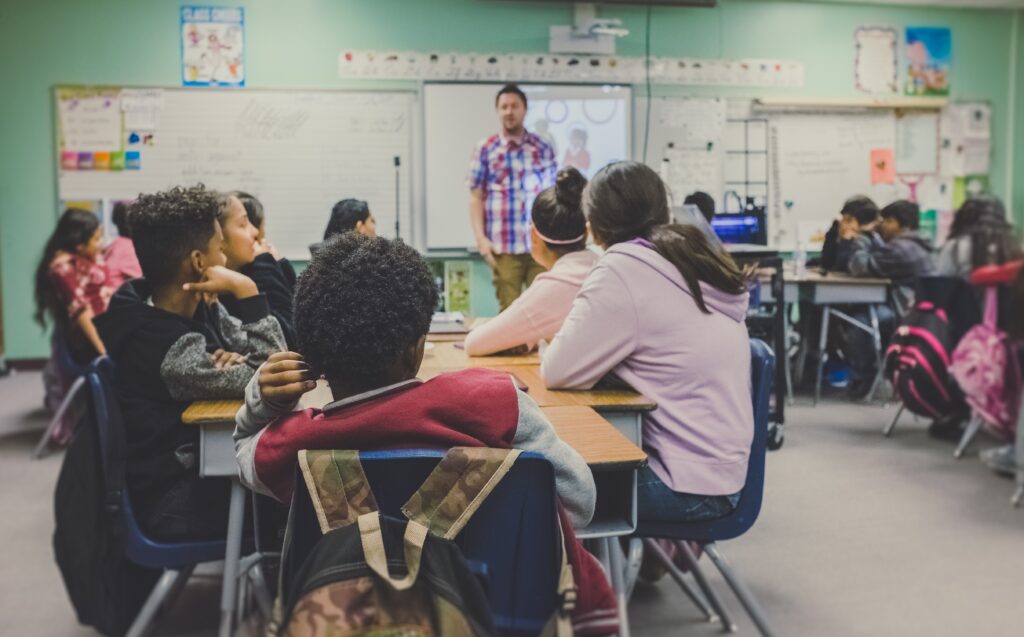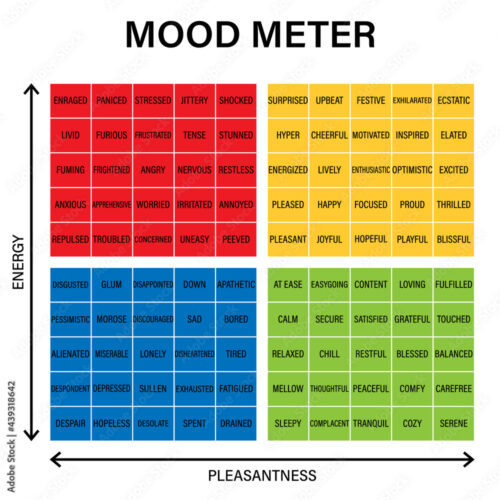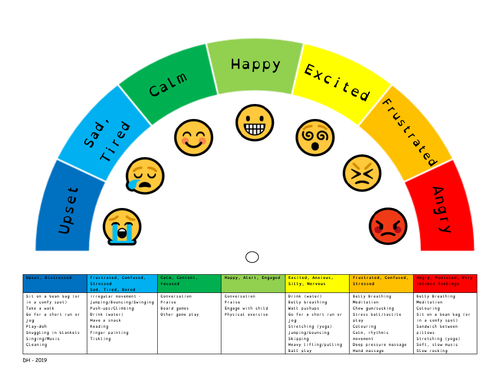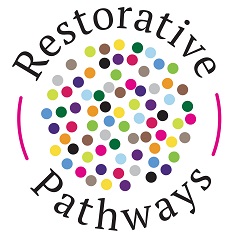Classroom Routines to Build Relational Culture (all year round)

A classroom with a strong relational culture is characterized by positive, supportive, and respectful interactions among students and between students and teachers.
At the beginning of an academic school year teachers prioritise establishing strong relationships with students, building connection before teaching content. This is intentional; teachers understand the power of positive relationships and the leverage this provides in daily classroom management and providing a platform for student engagement.
As a teacher, you might have come across some misinformation about how to begin the school year, phrases like, ‘don’t smile until Easter’ (or Christmas hemisphere dependant), or ‘come down hard first’ (then relax). The mindset behind this ‘advice’ is that to be a successful teacher, you must demand respect and quickly exert power and control over students and the environment or suffer the consequences of an unruly classroom. It also screams, ‘this is MY classroom, and we’ll do things MY way’.
Let me be clear, this is BAD advice!
This kind of mindset invokes worry, anxiety, distrust, resentment, and fear in students – none of which are going to help students engage with the teacher or with their learning successfully. By the way, the teacher is not having a good time of it either!
Students learn best when they feel safe and connected to others. Teachers teach best when they feel safe and connected to others too! Establishing and maintaining relational routines and expectations WITH students is the way for teachers to create positive classroom environments.
Routines that are consistent, predictable, and relational regulate our nervous systems, providing students (and teachers) with a sense of safety and belonging (you can explore this science here). Using classroom circles is a very effective routine for establishing positive and relational classroom communities. The following relational routines are suggested because they naturally occur within existing school structures, however, to learn more about using classroom circles download your free guide here.
Everyday Classroom Routines
Greetings
Connecting and re-connecting with students at the beginning of each day/session/lesson sends a clear message that you value your students and you’re happy to see them which sets the tone for what happens next. Research suggests that the impact of personal greetings on student engagement is noticeable within the first 10 minutes of the lesson.
You might try…
Personalise It. As a bare minimum, use the students’ name, it’s affirming, and they feel seen. It might surprise you to learn that some students can go a whole day without hearing their name spoken. Adding a personal question asking about how their footy team is faring or handing them a sticky note with the question written down so that they can respond and give it back before the end of the lesson is a nice touch. As you and your students get to know each other you could really inject some fun and frivolity into your greetings. For example, if you find out a student is a huge Star Wars fan you might greet them by saying, ‘May the force be with you’, or, if you and a student share a love of knock-knock jokes you could challenge each other to a new joke each week.
Different languages. Learn to say hello or welcome in lots of different languages and encourage students to do the same. Not only does this send the message of inclusion, but the novelty is also great for relationships and engaging the brain ready to learn.
Non-Verbals. Greet students with a smile, a nod, a handshake, a hi-five, a fist bump, etc. You can also ask students to hold up between zero and five fingers to show you their energy, motivation, or positivity levels on their way in. This information can be used to re-structure your lesson slightly if required. It’s important to seek consent from your students about which non-verbal greetings they are comfortable with.
Roll Play
Student attendance is regularly checked throughout the school day, usually more than once. This can either be a tick-a-box moment or an opportunity to inject a little fun and connection in this mandated routine.
You might try…
This or That. The teacher provides two seemingly opposing options, for example, Coke or Pepsi, cat or dog, summer or spring, ice cream or jelly. When the teacher calls the students’ name, the student responds with their preferred choice.
Yes or No. Ask students to respond to a yes or no question when you call their name. For example, do you think homework is helpful?, do you think aliens exist?, if you found $20 on the ground would you turn it in? No explanations allowed, just a yes or a no answer.
Ball Toss. Using a soft ball, the teacher tosses the ball to the first name on the roll. That student then tosses to the second name on the roll, so on and so forth until the last student on the roll has caught the ball. This requires students to know the roll order. A variation of this would be that the students toss the ball to any other student (not in roll order) and the teacher marks the names off as the ball is tossed between the students.
Regulation
Self-regulation is the ability to understand and manage your own behaviour and your responses to feelings and experiences happening within and around you. It includes being able to focus and re-focus on a task, control impulses, or to calm down after something exciting or upsetting for example. Self-regulation is largely learned through warm and responsive relationships with adult caregivers, first in the home and then elsewhere like at school. How students (and teachers) feel at school greatly impacts their relationships and interactions with others. Setting up regulation routines to help students understand themselves better and have autonomy over how they regulate is a life-long skill and contributes to positive class climates.
You might try…
Move It. Sitting or being still for long periods of time is unnatural for us and simply not how our bodies are designed to work best. Research shows movement is required to regulate our nervous system and improves memory, executive functioning, attention, and motivation. Plan for frequent movement breaks, take the learning outdoors, or just have a quick game of rock, paper, scissors!
Breathe. One of the simplest ways to self-regulate is with breathing strategies. Controlling your breathing impacts your heart rate, your stress response system, helps to manage your emotions and can be the difference between regulation and dysregulation. Strategies like box breathing are easy to learn, portable, and can be used in a private moment if required meaning distractions are kept to a minimum.
Emotion Guage. Like a rain gauge, only this one asks us to reflect, measure and share our emotions. The ability to recognise, understand and label emotions are prerequisites for being able to regulate them. Teachers can use a simple visual tool like the Mood Meter, or a program like the Zones of Regulation, to encourage students to regularly check in with their emotions and sensations, and work on applying effective regulation strategies.


Help
Help-seeking is about communicating an issue or challenge to get support, advice, or other forms of assistance. Students may feel vulnerable asking for and accepting help in the classroom, especially when they are protecting their identity in front of their peers. When students feel safe, they will voice their concerns and challenges. Establishing and modelling relational help-seeking routines in the classroom sends the message that everyone needs help sometimes and empowers students to seek the support they need.
You might try…
Peer Support. Establishing study groups or buddy systems encourages students to seek help from their peers before approaching the teacher, promoting collaborative learning and strong connections with peers. Change the groups or pairings regularly enabling connections to be built across the class group.
Your Go To. This routine requires some pre-planning. At the beginning of the year, and regularly throughout, ask students to list their strengths and talents they would be willing to share with others. Then at the beginning of your lesson, spend the first few minutes outlining the learning intention and success criteria so that students are clear on the content. Then ask students to volunteer to be a ‘go to’ support person during the lesson. Encourage all kinds of ‘go to’ support; students have different strengths and interests, which are all valuable at different times in the classroom. Some students might be a ‘go to’ for editing, writing a procedural text, reflection, algebra, scientific observation, spelling, creative thinking, AI, research skills, shooting a 3-point basketball shot, and the list goes on.
Help Desk. When setting up the learning space, establish a designated help desk, just like in retail centres. This is a space students know they can come to when they are stuck and need some help, advice, or feedback. You might have some information posters, strategy guides, or worked examples at the desk, and the teacher (or a ‘go to’) also ensures they sit at the help desk periodically during the lesson making themselves available to students who need support. Having a designated help desk sets a clear expectation that students will need and receive help.
Fostering a strong relational classroom culture is an intentional and continuous journey throughout the academic year. Building and maintaining positive connections lays the foundation for a supportive and engaging learning environment. Ultimately, relational routines, when taught, modelled, reinforced, and celebrated, contribute to the development of a positive classroom community that nurtures trusting relationships and enhances the overall educational experience.

Add A Comment